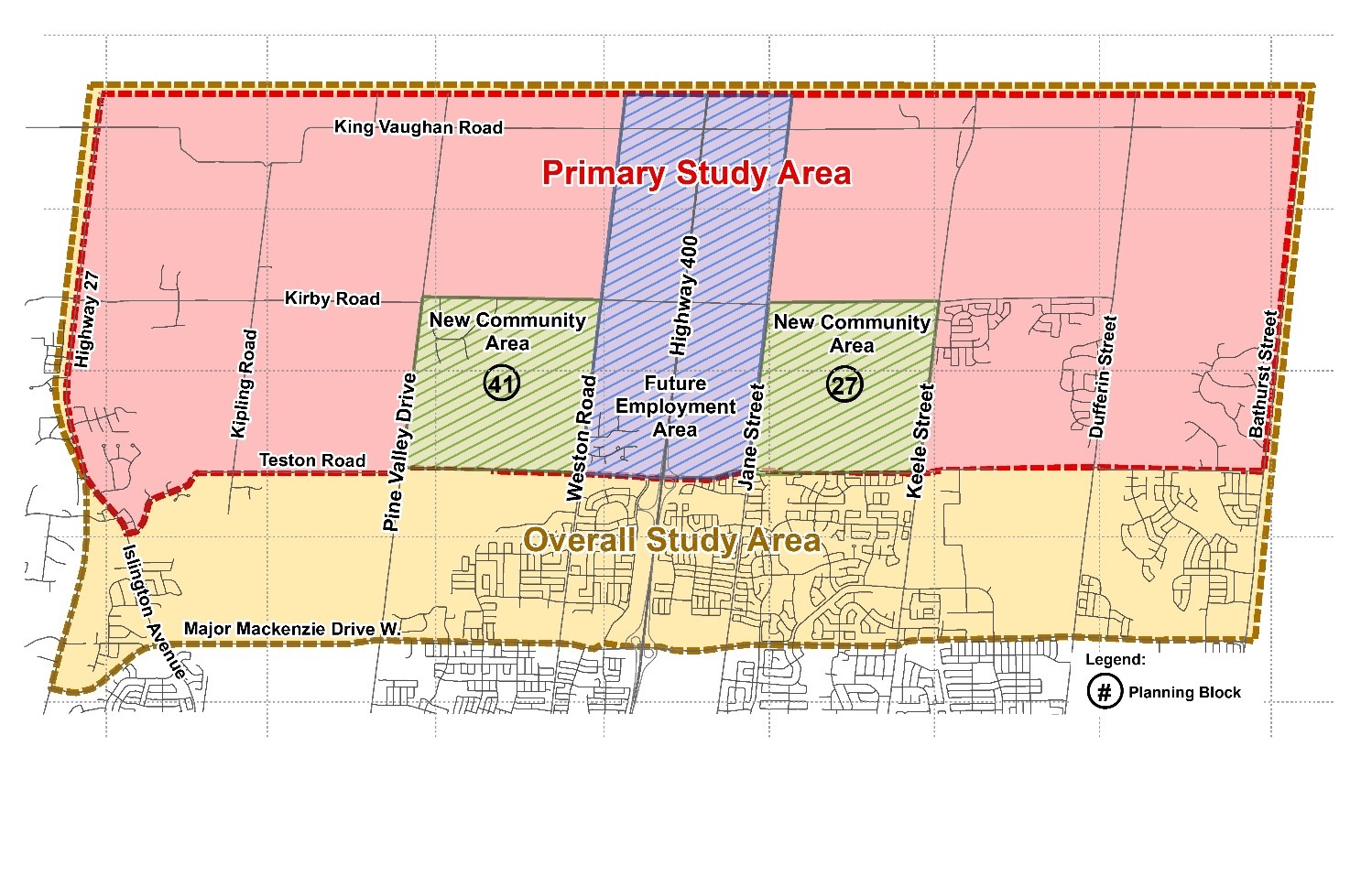North Vaughan and New Communities Transportation Master Plan
Background
The City of Vaughan initiated the North Vaughan and New Communities Transportation Master Plan (NVNCTMP) to develop a well-integrated and sustainable transportation network that considers auto, transit, cycling, and pedestrian needs for the North Vaughan study area to accommodate both existing residents and new residents to 2031 and beyond.
The primary goal of the study was to coordinate and support the development of Block 27 and Block 41 Secondary Plan areas within the broader context of the North Vaughan study area. As urban expansion areas that will accommodate new growth, the preparation of Secondary Plans for these New Community Areas is a requirement under both the Regional Official Plan and the Vaughan Official Plan 2010.
Secondly, and building upon the 2013 City of Vaughan Transportation Master Plan, the study will identify a transportation plan for the entire North Vaughan study area which included support for existing communities and other growth areas including:
- Highway 400 North Employment Lands
- Kleinburg-Nashville Focused Area (Block 55 East)
- Planning Blocks 40 and 47
The Study defined policies, programs and infrastructure required to meet the City's mobility needs and provide a context for transportation decisions. The objective of this plan was to look at both internal and external factors that contribute to achieving sustainable transportation for residents and businesses while ensuring recommendations of the plan address needs ranging from immediate to future growth.
Study Process
In addition, the study was carried out through an open public process in accordance with the requirements of Phases 1 and 2 of the Municipal Class Environmental Assessment (EA) process (MEA, October 2000 as amended in 2011) which is an approved process under the Environmental Assessment Act. The TMP study was carried out in two Phases:
- Phase 1 assessed existing conditions, context and challenges; and
- Phase 2 developed network plans and identify triggers for different infrastructure needs, phasing of projects, an action plan and a funding strategy.
Consultation
Public meetings were held throughout the study to both inform and seek public input on the study. Notices were provided in the newspaper and on the project website.
Scope
Study Area
The Study Area for the NVNCTMP is bounded by Highway 27, King-Vaughan Road, Bathurst Road, and Teston Road, and is illustrated in this study area map:

Study Goals
Building on the strategic directions of the City’s Official Plan, the City-wide Transportation Master Plan, Green Directions Vaughan, the York Region Official Plan and ongoing TMP update, and the Big Move Regional Transportation Plan, the North Vaughan and New Communities TMP had the following goals:
- Developing a transportation network that is more permeable in the North Vaughan Area, especially within new community areas and connecting them to the greater transportation network, which supports mixed uses and densities to create a City with sustainable built form
- Establishing a plan for pedestrian and bicycle facilities in the North Vaughan and New Communities area in accordance with the criteria outlined in the City’s approved Pedestrian and Bicycle Master Plan to ensure that Vaughan is a City that is easy to get around in with low environmental impact
- Developing a plan as part of the transportation strategy to establish a potential GO station which will support efficient and accessible public and private transit
- Developing an integrated transportation system for all modes of transportation, ensuring investment in transportation infrastructure will benefit the city’s economic vitality, creating a vibrant community where citizens, business and visitors thrive
- Addressing transportation requirements for the Block 27 and Block 41 Secondary Plan studies considering the development of their internal networks and connectivity to the external transportation network.
Final Report has been amended in response to public comments August 2019
Notices

